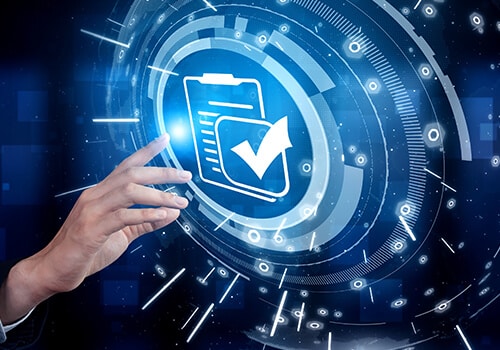If you intend to launch a successful donut business, you need to prepare the best donut in the market. While your technical skills and experience do play a crucial role in your donuts business, for your delicacy to genuinely click among your target audiences and fetch recurring business, you need to prepare your donuts with the best ingredients possible.
The quality of your individual ingredients, the place you source them from, how they blend and complement each other, and more invariably determine the donut’s taste, shape, and consistency. The same is true for the development of your machine learning models as well.
While the analogy might seem bizarre, realize that the best ingredient you could infuse into your machine learning model is quality data. Ironically, this is also the most difficult part of AI (Artificial Intelligence) development. Businesses struggle to source and compile quality data for their AI training procedures, ending up either delaying development time or launching a solution with less efficiency than anticipated.
Limited by budgets and operational constraints, they are compelled to resort to offbeat data collection methods such as different crowdsourcing techniques. So, does it work? Is crowdsourcing high-quality data really a thing? How do you measure data quality in the first place?
Let’s find out.
What Is Data Quality And How Do You Measure It?
Data quality doesn’t just translate to how clean and structured your datasets are. These are aesthetic metrics. What really matters is how relevant your data to your solution is. If you’re developing an AI model for a healthcare solution and a majority of your datasets are mere vital stats from wearable devices, what you have is bad data.
With this, there is no tangible outcome whatsoever. So, data quality boils down to data that is contextual to your business aspirations, complete, annotated, and machine-ready. Data hygiene is a subset of all these factors.
Now that we know what poor quality data is, we have also listed down a list of 5 factors that influence data quality.
How To Measure Data Quality?

Ratio Of Data To Errors
This tracks the number of errors a dataset has with respect to its volume.
Empty Values
This metric indicates the number of incomplete, missing, or empty values in datasets.
Data Transformation Errors Ratios
This tracks the volume of errors that crop up when a dataset is transformed or converted into a different format.
Dark Data Volume
Dark data is any data that is unusable, redundant, or vague.
Data Time To Value
This measures the amount of time your staff spends on extracting required information from datasets.
So How To Ensure Data Quality While Crowdsourcing
There will be times your team will be pushed to collect data within stringent timelines. In such cases, crowdsourcing techniques do help significantly. However, does this mean crowdsourcing high-quality data can always be a plausible outcome?
If you’re willing to take these measures, your crowdsourced data quality would amplify to a certain extent that you could use them for quick AI training purposes.
Crisp and Unambiguous Guidelines
Crowdsourcing means that you will be approaching crowd-sourced workers over the internet to contribute to your requirements with relevant information.
There are instances where genuine people fail to provide correct and relevant details because your requirements were ambiguous. To avoid this, publish a set of clear guidelines on what the process is all about, how their contributions would help, how they could contribute, and more. To minimize the learning curve, introduce screenshots of how to submit details or have short videos on the procedure.
Data Diversity And Removing Bias

Publish your crowdsourcing campaign across different market segments, audience personas, ethnicities, age groups, economical backgrounds, and more. This will help you compile a rich data pool you could use for unbiased outcomes.
Multiple QA Processes
Ideally, your QA procedure should involve two major processes:
- A process led by machine learning models
- And a process led by a team of professional quality assurance associates
Machine Learning QA
This could be your preliminary validation process, where machine learning models assess if all the required fields are filled, necessary documents or details are uploaded, if the entries are relevant to the fields published, diversity of datasets, and more. For complex data types such as audio, images, or videos, machine learning models could also be trained to validate necessary factors such as duration, audio quality, format, and more.
Manual QA
This would be an ideal second-layer quality check process, where your team of professionals conducts rapid audits of random datasets to check if the required quality metrics and standards are met.
If there is a pattern in outcomes, the model could be optimized for better results. The reason why manual QA wouldn’t be an ideal preliminary process is because of the volume of datasets you would eventually get.
So, What’s Your Plan?
So, these were the most practical best practices to optimize crowdsourced data quality. The process is tedious but measures like these make it less cumbersome. Implement them and track your outcomes to see if they are in line with your vision.




